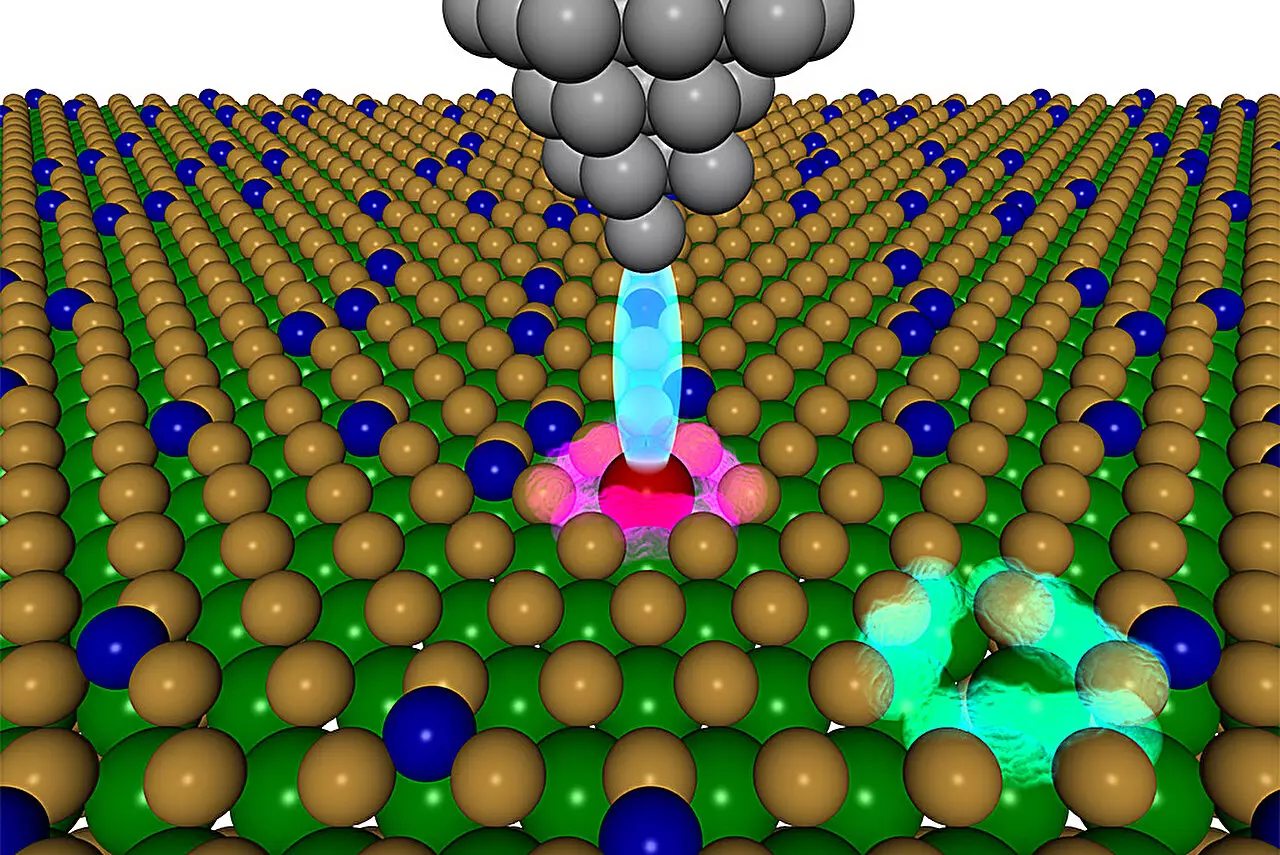In recent years, the quest for materials that can harness the unique properties of quantum mechanics has surged, and researchers at the Lawrence Berkeley National Laboratory (Berkeley Lab) have made significant strides in this arena. Their collaborative study, published in the journal *Nature Communications*, presents a cutting-edge methodology that may redefine how we discover and fabricate quantum materials. This innovative approach is not just a minor tweak to existing techniques; it could be the spark that ignites an entire revolution in quantum computing, telecommunications, and sensor technology.
The traditional methodology for discovering new materials is laborious and time-consuming. Researchers typically fabricate defects in materials and then painstakingly evaluate their properties. If they fail to yield promising results, the process must restart from scratch—a method fraught with inefficiency and wasted resources. However, the Berkeley Lab team, along with partners from prestigious institutions such as Dartmouth College and Penn State, has flipped this paradigm. They have integrated predictive theory with targeted experimentation, enabling a streamlined selection of candidate materials that present significant quantum potential.
The Power of Computational Screening
At the heart of this breakthrough is an advanced computational approach that enables rapid screening of hundreds of materials. The research team employed high-throughput computational methods to analyze over 750 potential defects in the two-dimensional (2D) material tungsten disulfide (WS2). By substituting tungsten or sulfur atoms with various elements, they sought defects that demonstrate desirable electronic properties and stability characteristics.
The critical realization here is that accessing and fabricating functional quantum defects is not merely a random undertaking but can be guided by comprehensive theoretical principles. As Alex Weber-Bargioni aptly pointed out, their strategy involves using theoretical insights to inform the experimentalists about where to focus their efforts. This division of labor allows researchers to focus on the most promising candidates, rather than spreading themselves too thin over a nearly infinite number of potential defects.
This computer-guided approach is particularly crucial given the extensive range of possible substitutions. The challenge, as Sinéad Griffin noted, is that even within a single material like WS2, the combination of periodic table elements and their various positions results in a dauntingly large number of defects that could potentially be analyzed. The computational screening significantly narrows down this vast array, presenting only the most promising materials for physical investigation.
Precision Fabrication Techniques Unveiled
Following the identification of promising candidates through computational methods, the research team entered the next phase: precise fabrication. Traditional methods have limited control over defect placement, but the scientists at Berkeley Lab developed a meticulous technique to allow for atomic-level precision in inserting cobalt atoms into WS2. This involved a sophisticated process where the material was placed in a super-low-temperature vacuum, subjected to argon ion bombardment to create vacancies, and subsequently infused with cobalt atoms which were positioned using a scanning tunneling microscope.
This methodology is akin to playing an intricate game of atomic chess, where each move has profound implications on the material’s properties and its efficacy in quantum applications. By utilizing such meticulous techniques, the researchers ensured that each defect was identical—an essential criterion for achieving quantum entanglement, an effect critical for quantum communication.
Such innovations are vital for future technological advancements. Imagine a fiber-optic cable that utilizes these quantum defects to transmit information through light absorption and emission over long distances. The integration of advanced computational modeling and collaborative experimental techniques is a clear indicator that this team is not just aiming for novelty but rather for functional applicability in real-world scenarios.
The Collaborative Framework Driving Success
While advancements in technology and methodology are noteworthy, the collaborative nature of this research might be the real highlight. Geoffroy Hautier emphasizes that the synergy between theorists and experimentalists was crucial. Regular meetings and continuous feedback loops ensured that both sides were aligned and could adapt their methods in response to real-time challenges. This kind of deep collaboration, enabled by unified funding and common goals, can often be the missing ingredient in successful scientific endeavors.
This groundbreaking work illustrates how an interdisciplinary approach can lead to extraordinary breakthroughs in materials science and quantum mechanics, potentially unlocking functionalities previously thought unattainable. The implications extend beyond merely discovering new materials; they stretch into reimagining the very foundations of technology and communication as we know them.
As the researchers continue to refine their techniques and expand their explorations, the field of quantum material science stands on the precipice of monumental progress. The ability to manipulate material properties at an atomic level and target specific functional outcomes isn’t just a dream—it’s becoming a reality, paving the way for a new era of technological evolution.


Leave a Reply